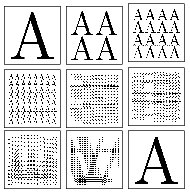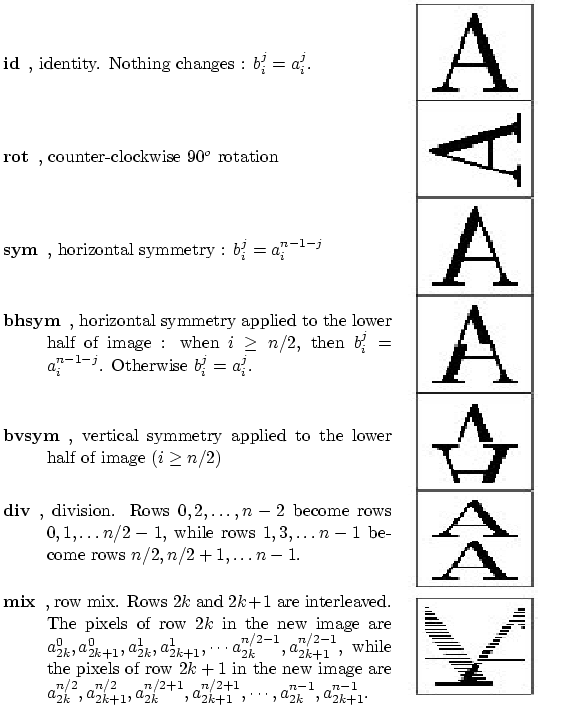JPIX - Pixel Shuffle

Shuffling the pixels in a bitmap image sometimes yields random looking images. However, by repeating the shuffling enough times, one finally recovers the original images. This should be no surprise, since "shuffling" means applying a one-to-one mapping (or permutation) over the cells of the image, which come in finite number.
Your program should read a number n , and a series of elementary transformations that define a "shuffling"  of n * n images. Then, your program should compute the minimal number m (m > 0) , such that m applications of
of n * n images. Then, your program should compute the minimal number m (m > 0) , such that m applications of  always yield the original n * n image.
always yield the original n * n image.
For instance if  is counter-clockwise 90o rotation then m = 4.
is counter-clockwise 90o rotation then m = 4.

Input
Test cases are given one after another, and a single 0 denotes the end of the input. For each test case:
Input is made of two lines, the first line is number n (2 <= n <= 210 , n even). The number n is the size of images, one image is represented internally by a n * n pixel matrix (aji) , where i is the row number and j is the column number. The pixel at the upper left corner is at row 0 and column 0.
The second line is a non-empty list of at most 32 words, separated by spaces. Valid words are the keywords id, rot, sym, bhsym, bvsym, div and mix, or a keyword followed by -. Each keyword key designates an elementary transform (as defined by Figure 1), and key- designates the inverse of transform key. For instance, rot- is the inverse of counter-clockwise 90o rotation, that is clockwise 90o rotation. Finally, the list k1, k2, ..., kp designates the compound transform  = k1ok2o ... okp . For instance, "bvsym rot-" is the transform that first performs clockwise 90o rotation and then vertical symmetry on the lower half of the image.
= k1ok2o ... okp . For instance, "bvsym rot-" is the transform that first performs clockwise 90o rotation and then vertical symmetry on the lower half of the image.

Figure 1: Transformations of image (aji) into image (bji)

Output
For each test case:
Your program should output a single line whose contents is the minimal number m (m > 0) such that  is the identity. You may assume that, for all test input, you have m < 231.
is the identity. You may assume that, for all test input, you have m < 231.
Example
Input: 256 rot- div rot div 256 bvsym div mix 0 Output: 8 63457
hide comments
|
|
gieniuszkrab:
2018-07-12 12:40:03
Shouldn't the sequence in the second test case be reversed? |
|
|
mukesh227194:
2015-11-23 20:21:35
finally!!!
|
|
|
(Tjandra Satria Gunawan)(曾毅昆):
2015-03-25 14:55:16
I don't know what the intended complexity for this problem, at first I got TLE using ~2KB O((number of keyword)*(n^2)) algo, but AC with same complexity after applying ultra heavy constant optimization, code is 4.5 × longer than unoptimized one (~9KB). I hope at least O(n^2 + (number of keyword)*n*log^2(n)) algo exist (I don't know yet), otherwise I don't like this problem where advanced constant optimization needed. I spent full days to do crazy optimization near low level.
|
|
|
Brian Bi:
2009-12-26 00:18:28
Tip: Cache efficiency. |
| Added by: | Fudan University Problem Setters |
| Date: | 2007-12-01 |
| Time limit: | 1.5s |
| Source limit: | 50000B |
| Memory limit: | 1536MB |
| Cluster: | Cube (Intel G860) |
| Languages: | All except: C99 ERL JS-RHINO |
| Resource: | ACM Central European Programming Contest, Budapest 2005 |

 RSS
RSS